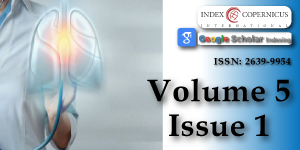“Fatty Lungs”: An uncommon case of Autoimmune Pulmonary Alveolar Proteinosis
Main Article Content
Article Details
Nieves-Ortiz, A. A., Hernandez-Moya, K., Garcia-Puebla, J., Padilla-Rodriguez, K., Roman-Velez, N., Veloz-Irizarry, G., … Fernandez-Gonzalez, R. (2021). “Fatty Lungs”: An uncommon case of Autoimmune Pulmonary Alveolar Proteinosis. Journal of Pulmonology and Respiratory Research, 5(1), 076–077. https://doi.org/10.29328/journal.jprr.1001029
Case Reports
Copyright (c) 2021 Nieves-Ortiz AA, et al.

This work is licensed under a Creative Commons Attribution 4.0 International License.
Trapnell BC, Whitsett JA, Nakata K. Pulmonary alveolar proteinosis. N Engl J Med. 2003; 349: 2527-2539. PubMed: https://pubmed.ncbi.nlm.nih.gov/14695413/
Suzuki T, Trapnell BC. Pulmonary alveolar proteinosis syndrome. Clin Chest Med. 2016; 37: 431-440. PubMed: https://pubmed.ncbi.nlm.nih.gov/27514590/
DynaMed. Pulmonary Alveolar Proteinosis (PAP). EBSCO Information Services. 2021. https://www.dynamed.com/condition/pulmonary-alveolar-proteinosis-pap

